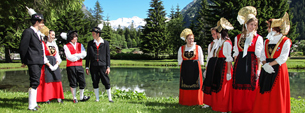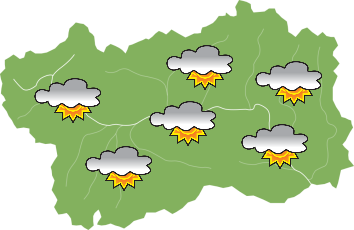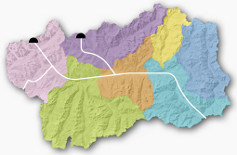Valsavarenche - The village of Nex
Architecture that is the product of "gentle restoration" and is historically exemplary evidence
Location
167 km from Annecy, 77 km from Chamonix, 153 km from Geneva, 30 km from Aosta.
Architectural topics
Settled on a morainal crest, formerly dedicated to cereal culture, the village of Nex, like its neighbouring village, Tignet, dominates the Dora Valley in Valsavarenche. Its raised position is a guarantee of safety in the face of avalanche threats and thunderous bursting rivers. The place name "nex" recalls the fact that hemp was steeped in the damp cave located alongside the access road. This small village was completely restored with the utmost respect for the original "canvas" by the architect Franco Binel, in the seventies. Today, it is still one of the most beautiful examples of "gentle restoration" carried out on a complex of traditional
167 km from Annecy, 77 km from Chamonix, 153 km from Geneva, 30 km from Aosta.
Architectural topics
Settled on a morainal crest, formerly dedicated to cereal culture, the village of Nex, like its neighbouring village, Tignet, dominates the Dora Valley in Valsavarenche. Its raised position is a guarantee of safety in the face of avalanche threats and thunderous bursting rivers. The place name "nex" recalls the fact that hemp was steeped in the damp cave located alongside the access road. This small village was completely restored with the utmost respect for the original "canvas" by the architect Franco Binel, in the seventies. Today, it is still one of the most beautiful examples of "gentle restoration" carried out on a complex of traditional
buildings in Valle d’Aosta, although all the buildings are used for residential tourism. The architecture in Nex is, in fact, particularly unusual when compared to that in the capital, Dégioz or that found in other villages within the area. In fact, numerous wooden barns for sheaves and wheat, dating back to the XV and XVII centuries have been preserved here. A small stone building that reminds us that in the early Middle Ages, the rural house in Valsavaranche was made up of small constructions dedicated to cereal culture on the slopes, as well as daily life at that height. This gives the village of Nex considerable importance in terms of architectural evidence of a way of living that has been forgotten. At the entrance to Valsavaranche, we can find the village of Rovenaud, worth mentioning for its XVII century chapel, consecrated to
San Defendente and St. Margaret. It is the birthplace of Émile Chanoux, head of the Valdostana resistance, killed by the fascists; his ideas strongly influenced the region's autonomy. At the centre of the village, the square is dominated by a XIX century fountain that encloses, face to face, the bread oven, dairy and school, while down by the group of barns, large stone buildings built between the Middle Ages and the XVIII century, remind us of the important role played in former times by the Carlin notaries.













